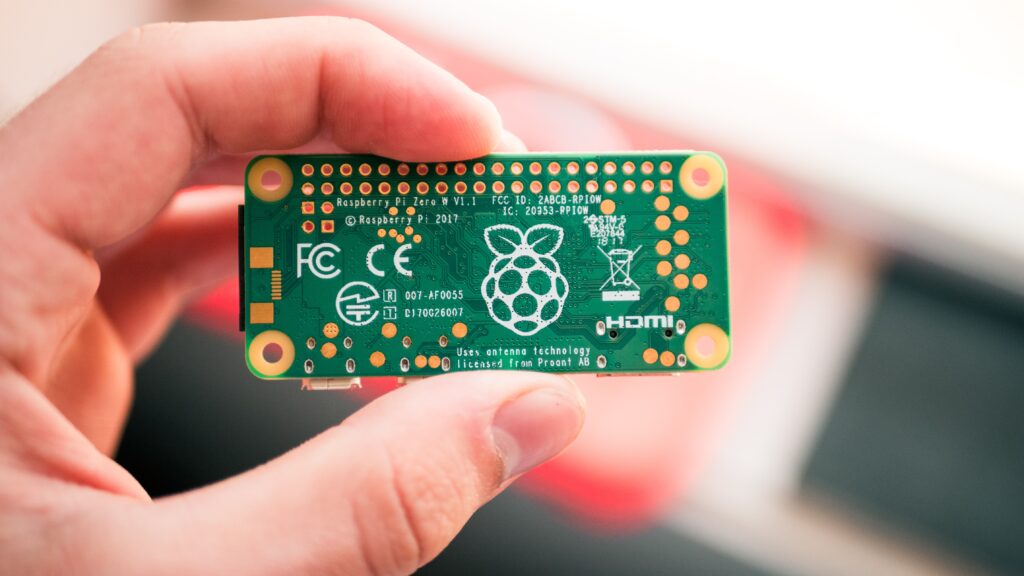Building automation systems (BAS) are becoming increasingly high-tech and cloud-native. Raspberry Pi microprocessors have long been staples for many of these new developments. Although many previous attempts have centered on using Raspberry Pi for home automation projects, the options span to commercial uses, too.
What should people expect in BAS advancements, and how will Raspberry Pi affect them? Here are some fascinating examples to inspire anyone who wants to make Raspberry Pi part of their BAS.
Raspberry Pi Creates a Multifunctional Office
When designing a BAS, people should take the time to figure out what they want the setup to include. From there, they can begin thinking about how Raspberry Pi microcontrollers will achieve those aims.
Foundational elements like access codes and door locks are often among the first things considered. Raspberry Pi microcontrollers can handle those needs and numerous others. An excellent example occurred when software company leaders decided they wanted a more connected workplace after moving into a larger office.
The plans included letting Raspberry Pi handle wireless music streaming, individualized TV content, meeting room occupancy signals and color-changing LED lights. The people involved even wanted a Raspberry Pi in the bathroom. It controlled a speaker system that let users hear ambient music while using the facilities.
Each of the company’s TVs has a Raspberry Pi controller affecting the displayed content. People can also change how it works so viewers can see slides shown during keynote speeches on the television.
This case study highlights how people must devote significant thought and ongoing efforts to design building automation systems that work for their current and existing needs. However, when everyone’s on the same page about what’s needed and offers pioneering ideas for how to get it done, the results are often impressive.
Researchers Use Raspberry Pi to Control a Pig Barn
Agricultural professionals know the importance of environmental consistency for getting the best outcomes with their animals and crops. Raspberry Pi is one of many single-board computers on the market. Researchers chose it while working on a project to improve the competitiveness of European farmers. People in this group often struggle with high losses and emissions, although automation can help. The goal was to automate parts of a pig barn to achieve more profitable outcomes.
One aspect of the technology in this project involved using machine vision cameras and deep learning algorithms to monitor pig behavior and catch possible health concerns early. Additionally, the system’s algorithms connect to a climate control system after detecting that the swine might be too warm. The technology gauges this by determining how close the pigs lie to each other while resting. Staying far apart from other pigs suggests the animals might be too warm.
Sensors detect temperatures and check for toxic gases. After determining the environment has too much of the latter, the system triggers a ventilator to restore the surroundings to normal levels.
The researchers also made this Raspberry Pi-based system compatible with Wi-Fi and Ethernet connections. Then, users can remotely monitor the system instead of only checking the conditions by standing directly at the controls.
A summary of the project mentioned a big data aspect people could use to inform the design of future facilities for pigs. Then, this initiative could have ripple effects that positively change the livelihoods of people who raise the animals and want to get the best outcomes from their efforts.
A Raspberry Pi System Reads License Plates
Successful manufacturers must remain agile and always ready to respond to marketplace changes. Many use reconfigurable manufacturing systems to stay agile. These solutions allow users to create many products on single assembly lines. Manufacturers also maintain agility by adding new shifts and hiring more team members. But as a company expands its team, there’s an increased need to verify that everyone trying to rightfully access a site can do it.
One individual showed what’s possible by using Raspberry Pi and Python to build an automated license plate recognition system. This innovation works in real-time, making it easy to cross-check that employees own the vehicles arriving at a facility’s gates.
People have also tried similar Raspberry Pi projects that read license plates and control parking barrier arms. The system checks the license plate of each incoming vehicle against a frequently updated database. This approach works especially well if people need to update the records to reflect approved visitors, whether safety inspectors, high school students on a field trip or anyone in between
People could also set up their systems so Raspberry Pi microcontrollers operate door controls once people leave their cars in the parking lot and attempt to enter the building. Creating a BAS that handles numerous needs is a great way to increase the likelihood of a high return on investment.
Automation Is Advancing
Innovative automation applications make buildings more secure and convenient for those who use them. Whatever the size and scope of a planned setup, individuals should strongly consider incorporating Raspberry Pi microcontrollers. These components are affordable and versatile, making them particularly attractive.
Ellie is a freelance writer who covers the latest innovations and advancements in science and technology for an audience of industry professionals. She’s also an associate editor for Revolutionized.



